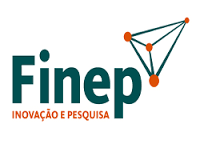Ion sources
On a Tandem accelerator, the center terminal is positive while the beam inlet and outlet tubes are grounded. In this way beam injection in the accelerator must be of negative ions. Ion sources of LAMFI generate negative ions of various elements, from hydrogen to titanium. There are two ion sources, with very different operating principles, the Alphatross and the SNICS.

As duas fontes de íons em operação no LAMFI, a da esquerda é a Alphatross e a da direita é a SNICS.
The Alphatross ion source produces negative He ions. A He beam is indicated for RBS analysis of thin films, and for elemental depth profiling. Is working principle is based primarily on the ionization of helium gas through the formation of a plasma by a 100 MHz radio frequency source. The positve He ions are accelerated by a 6kV potential difference towards a vapor exchange chamber, containing rubidium vapor. Only 2% of the positive He beam is converted to negative ions, which are extracted and pre-accelerated by a voltage of 14 kV and injected into the accelerator.


General vew of the Alphatross source and the He gas input.

The He plasma
The SNICS (Source of Negative Ions by Cesium Sputtering) generates beams from any solid material by impacting of cesium ions on the cathode, which sputters out negative ions. Since the cathode is held at a negative potential of approximately 2 kV, the Cs+ ions are attracted to it, and the sputtered negative ions are repelled. The beam is drawn from the source and pre-accelerated by a potential difference of 18 kV.

The SNICS ion source
By using alkali metals in both sources, Rb in the Alphatross and Cs in the SNICS, a good vacuum in the sources is crucial, as any leakage leads to oxidation of the metal, leaving the sources inoperative. Both sources are capable of generating negative beams of the order of 300nA of current, sufficient for most applications in the laboratory.








